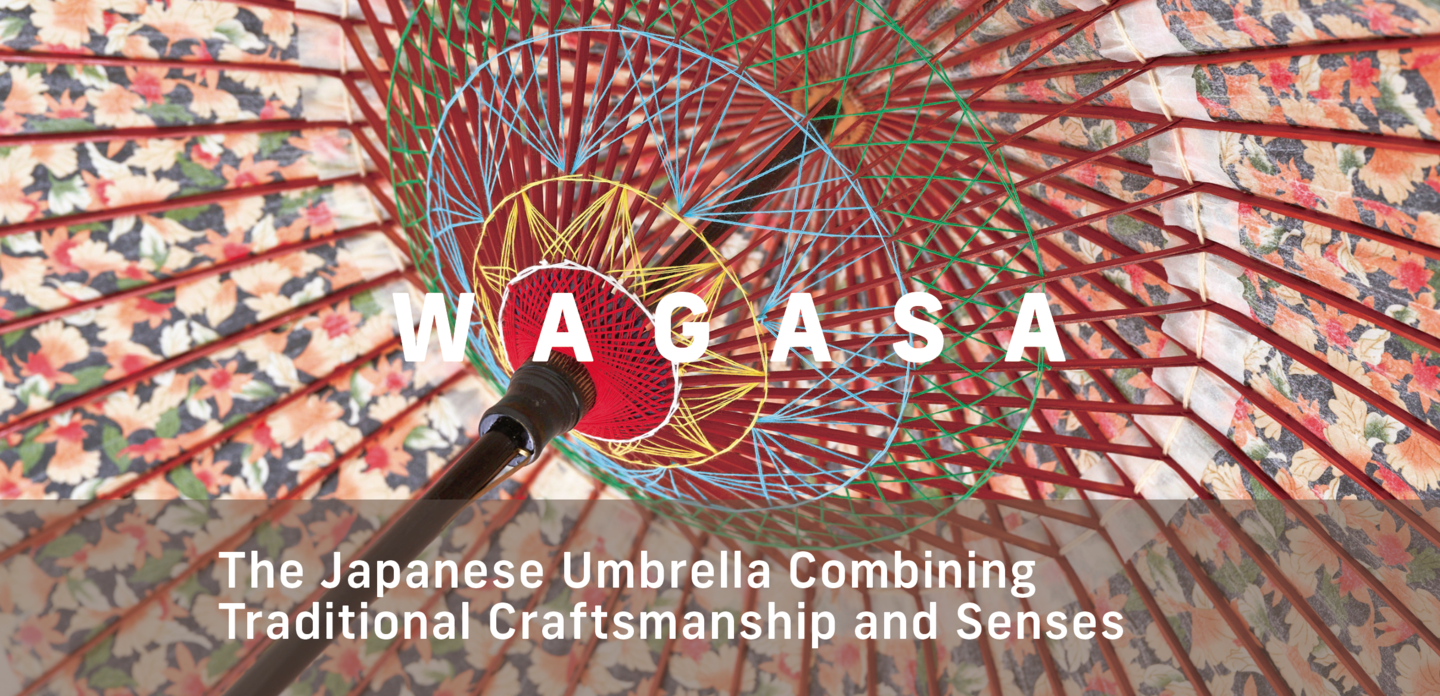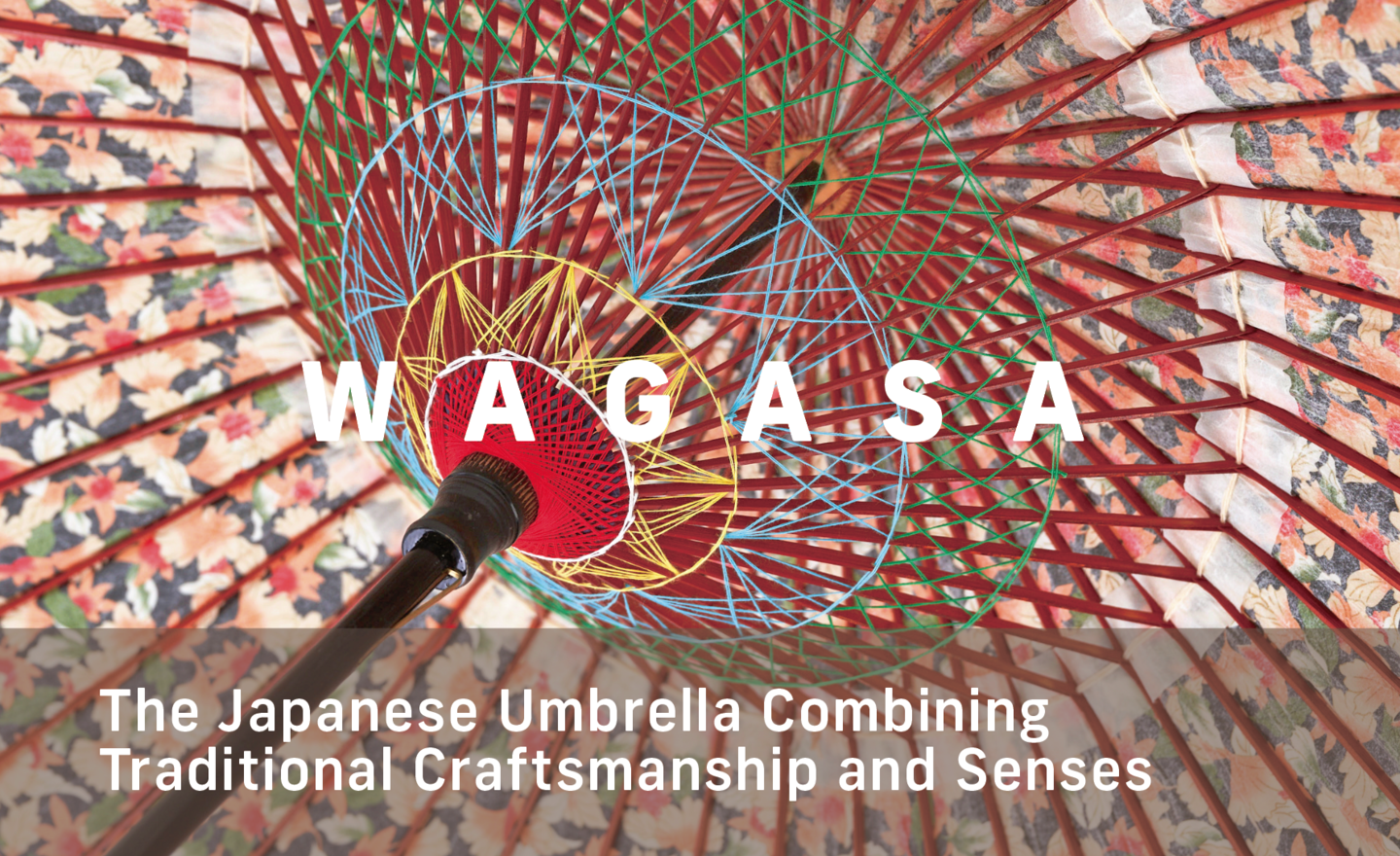
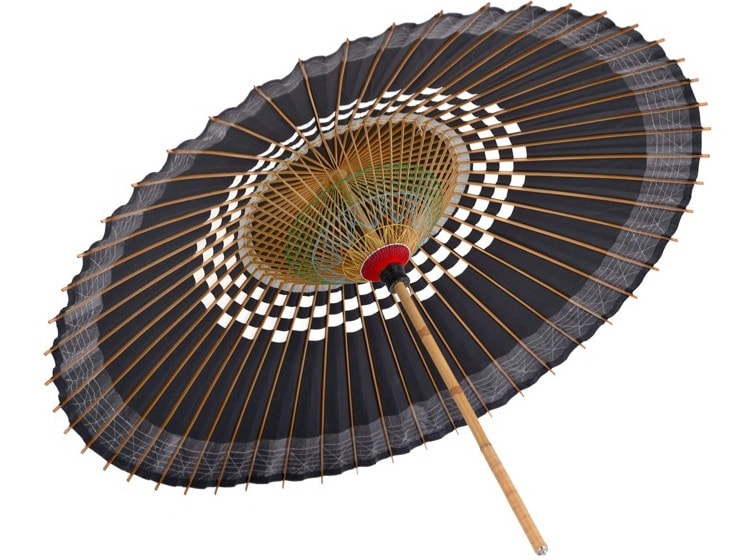
The history of wagasa’s practicality
and symbolism in the Japanese culture
As one of the world’s rainiest regions, Japan relies heavily on umbrellas for daily life. Introduced from China along with Buddhism around the 6th century, these umbrellas evolved uniquely in Japan and became widely used by ordinary people as rain gear during the Edo period (1603-1868).
Initially, the main production areas were Kyoto and Osaka, with manufacturing spreading to Gifu, Tokyo, and eventually other regions, including Kanazawa. Adorned with intricate craft designs, these umbrellas were regarded as luxury items. Frequent bans were imposed by the shogunate and various domains, but these restrictions were largely ineffective.
Umbrellas serve not only as practical items, but also as props in Kabuki performances and dances and as part of stage settings in traditional festivals and rituals. They were also a popular motif in ukiyo-e prints during the Edo period, which depicted everyday life, landscapes, beautiful women, and actors. The concept of hiding one’s face, symbolizing the concealment of identity, even inspired mythical ‘umbrella monsters’ in ancient folklore. Through these elements, the rich Japanese aesthetic and imagination are beautifully reflected in the elegant umbrella.
From 1868 onward, when umbrellas began to be imported into Japan from the Netherlands and the U.K., traditional Japanese umbrellas made with a bamboo frame and washi paper were referred to as “wagasa” to distinguish them from Western- style umbrellas covered with fabric, known as “yōgasa.”
Unique techniques developed to suit Kanazawa’s local climate
Wagasa are deeply connected to the weather, climate, and culture of their production areas. In Kanazawa, known for its heavy rainfall and wet, heavy snow, umbrellas are crafted to be durable enough to withstand these conditions, resulting in both resilience and a unique structural beauty. The area’s rich tradition of arts and crafts since the Edo period, along with its strong artisan community, has significantly contributed to the thriving wagasa culture. Historically, geiko (geisha) from Kanazawa’s three chaya districts—Higashi, Nishi, and Kazuemachi—would renew their umbrellas for the New Year, competing to display their most elegant designs.
Kanazawa once boasted over 100 wagasa shops at its peak, each competing in terms of craftsmanship and design. Now that Western-style umbrellas are more common, the only wagasa shop that has remained from that time is Matsuda Wagasa, established in 1896 and now run by the third-generation craftsman, who carries on the Kanazawa’s tradition of making wagasa, along with his fellow craftsmen.
Opening a wagasa reveals geometric patterns formed by colorful overstitching threads. These threads not only strengthen the umbrella but also enhance its decorative appeal. Unlike Western-style umbrellas, which wrap fabric around the outside of the ribs, wagasa fold washi paper inside the ribs when closed.
Wagasa are predominantly made from natural materials, including bamboo, washi paper, oil, and lacquer, all of which require expert craftsmanship. “Kanazawa Wagasa” are notable for their use of thick washi paper, with the umbrella’s tip reinforced by four layers of paper for added durability. Each umbrella is meticulously crafted through about 30 to 40 steps and takes over two months to complete. With proper care, a finished product can last fifty years.
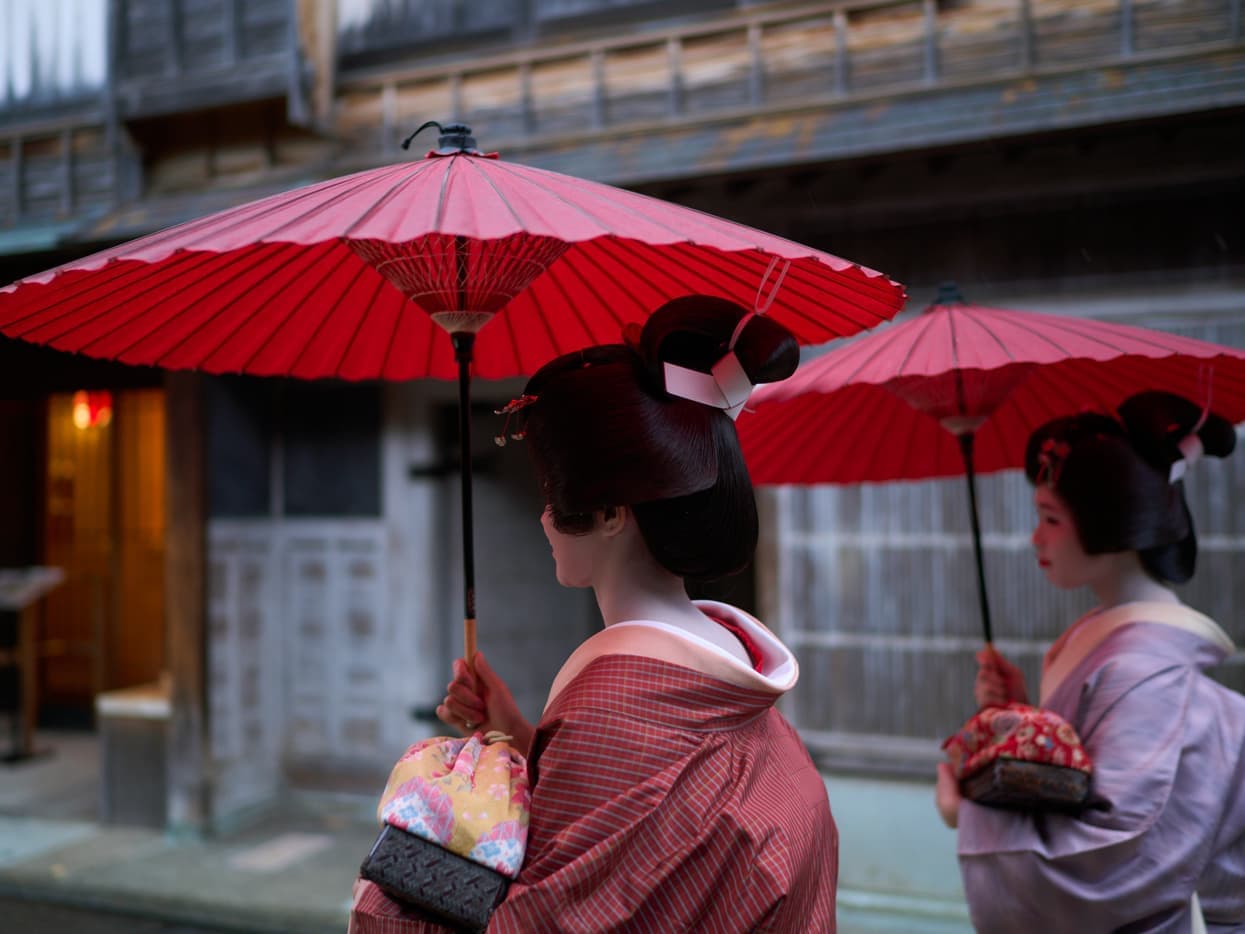
Changing ways of appreciating the traditional craft
Today, wagasa are primarily regarded as craft items. While they are rarely used as everyday rain gear, they are still cherished by women in professions that involve wearing kimono, such as geiko (geisha). The vibrant colors of wagasa contrast beautifully with Kanazawa’s gray, rainy skies and winter snow scenes. Recently, more foreign tourists have been purchasing wagasa to add a touch of traditional Japanese elegance to their interior spaces or as decorative pieces. However, we recommend using wagasa on rainy days, rather than keeping them as decorative items, to truly experience the scenery and spirit of Japan.
Unique techniques developed to suit Kanazawa’s local climate
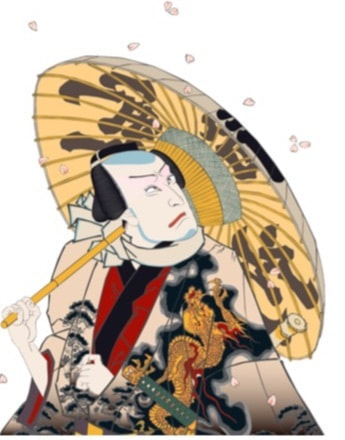

Kanazawa once boasted over 100 wagasa shops at its peak, each competing in terms of craftsmanship and design. Now that Western-style umbrellas are more common, the only wagasa shop that has remained from that time is Matsuda Wagasa, established in 1896 and now run by the third-generation craftsman, who carries on the Kanazawa’s tradition of making wagasa, along with his fellow craftsmen.
Opening a wagasa reveals geometric patterns formed by colorful overstitching threads. These threads not only strengthen the umbrella but also enhance its decorative appeal. Unlike Western-style umbrellas, which wrap fabric around the outside of the ribs, wagasa fold washi paper inside the ribs when closed.
Wagasa are predominantly made from natural materials, including bamboo, washi paper, oil, and lacquer, all of which require expert craftsmanship. “Kanazawa Wagasa” are notable for their use of thick washi paper, with the umbrella’s tip reinforced by four layers of paper for added durability. Each umbrella is meticulously crafted through about 30 to 40 steps and takes over two months to complete. With proper care, a finished product can last fifty years.
Changing ways of appreciating the traditional craft
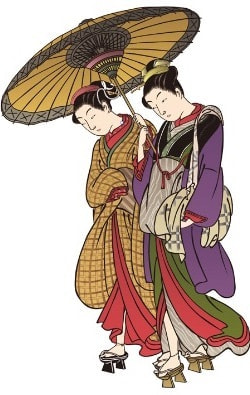
Today, wagasa are primarily regarded as craft items. While they are rarely used as everyday rain gear, they are still cherished by women in professions that involve wearing kimono, such as geiko (geisha). The vibrant colors of wagasa contrast beautifully with Kanazawa’s gray, rainy skies and winter snow scenes. Recently, more foreign tourists have been purchasing wagasa to add a touch of traditional Japanese elegance to their interior spaces or as decorative pieces. However, we recommend using wagasa on rainy days, rather than keeping them as decorative items, to truly experience the scenery and spirit of Japan.
Kanazawa Wagasa
Visit the workshop and gallery below to see authentic Kanazawa Wagasa.
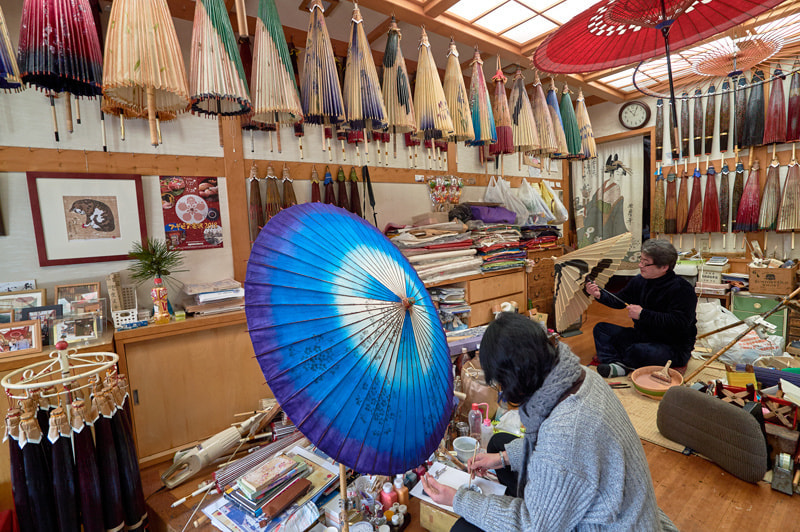
[Workshop]
Matsuda Wagasa Shop
7-4, Sennichimachi, Kanazawa
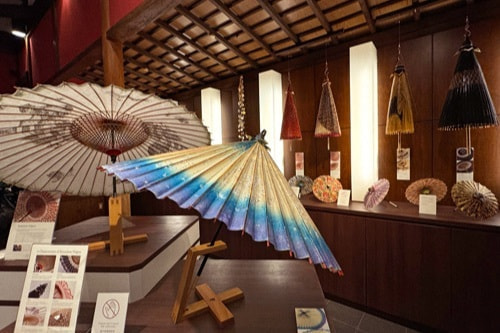
[Gallery & Shop]
Sakakobo Taro
1-3-32, Nagamachi, Kanazawa (the Samurai District)




